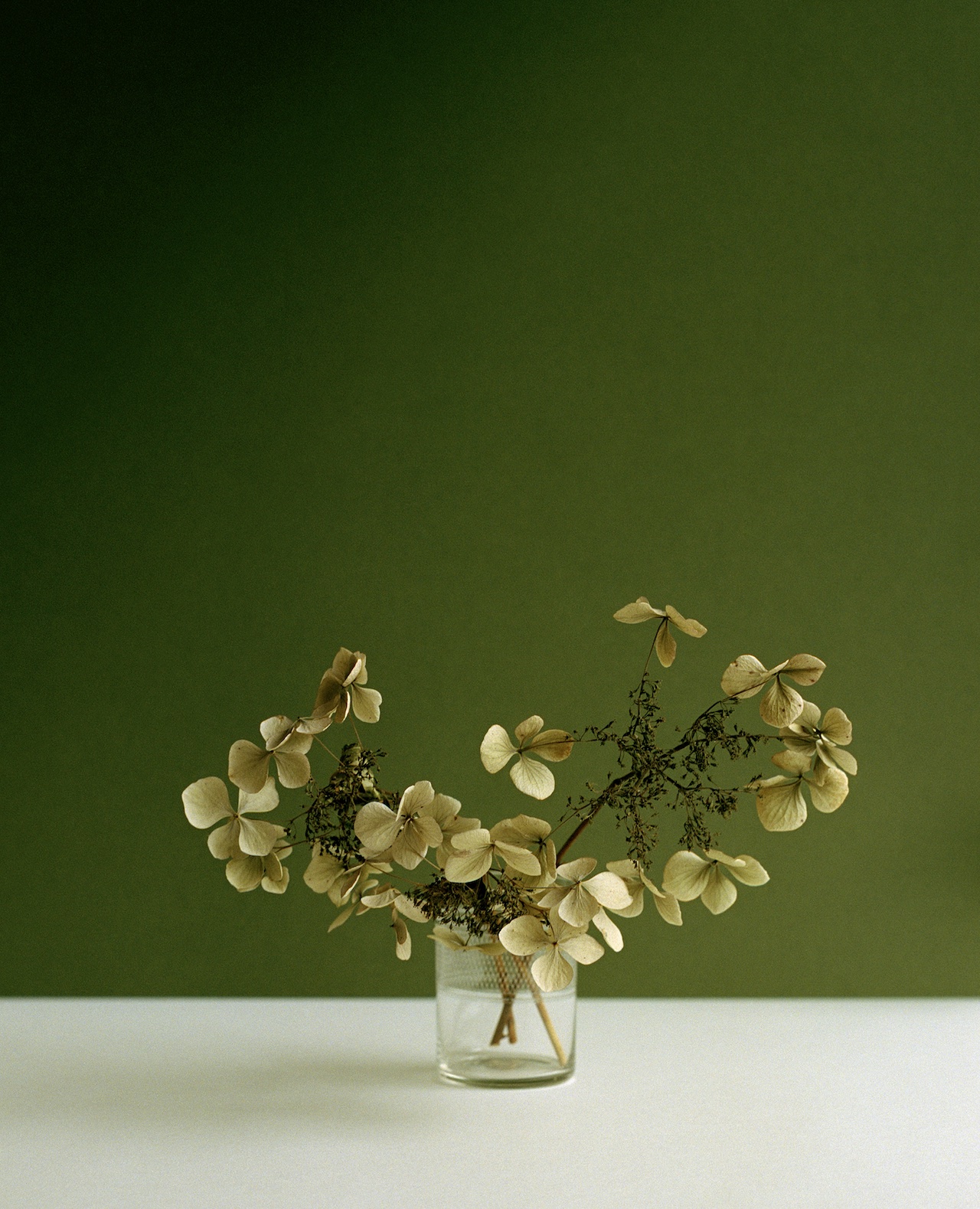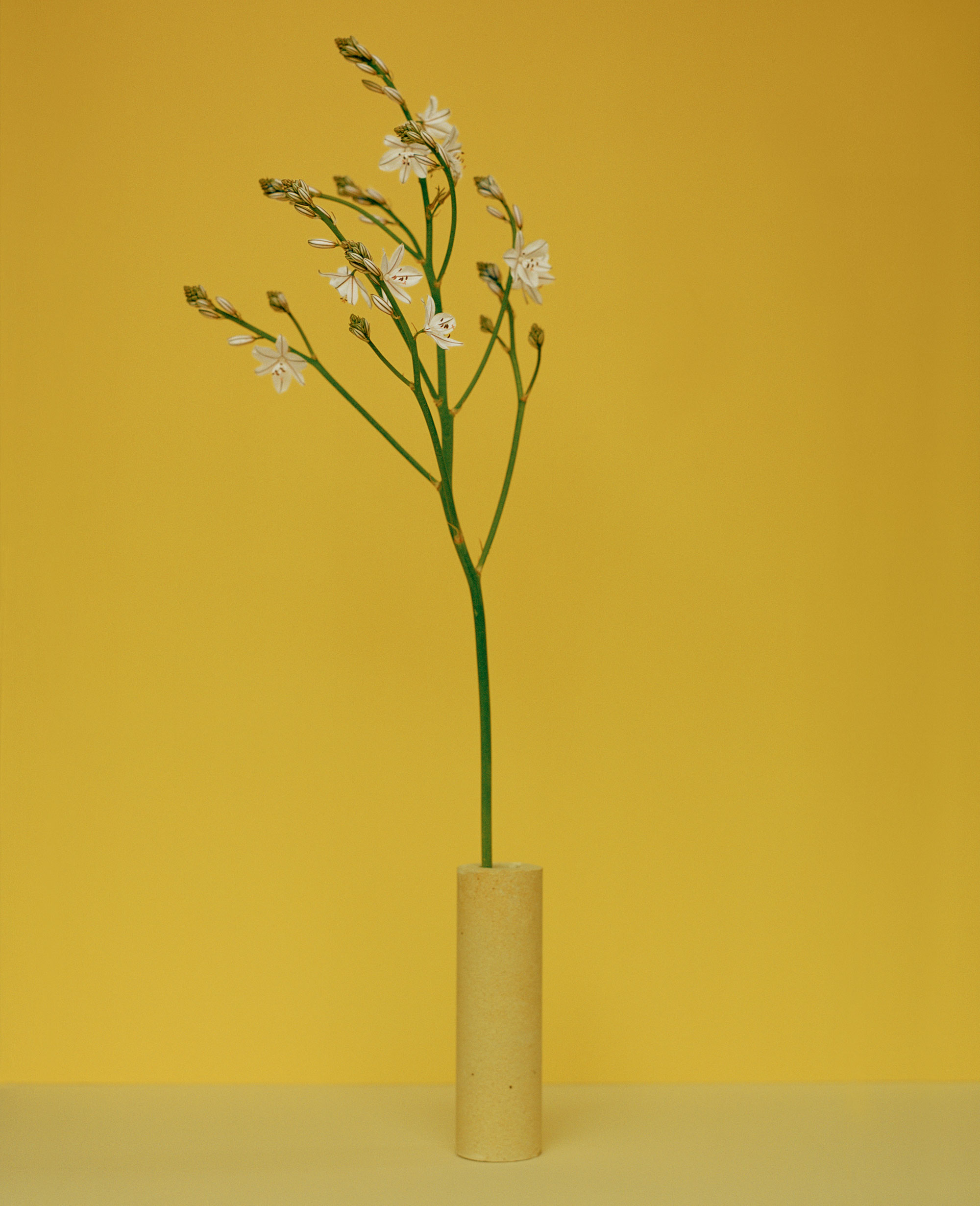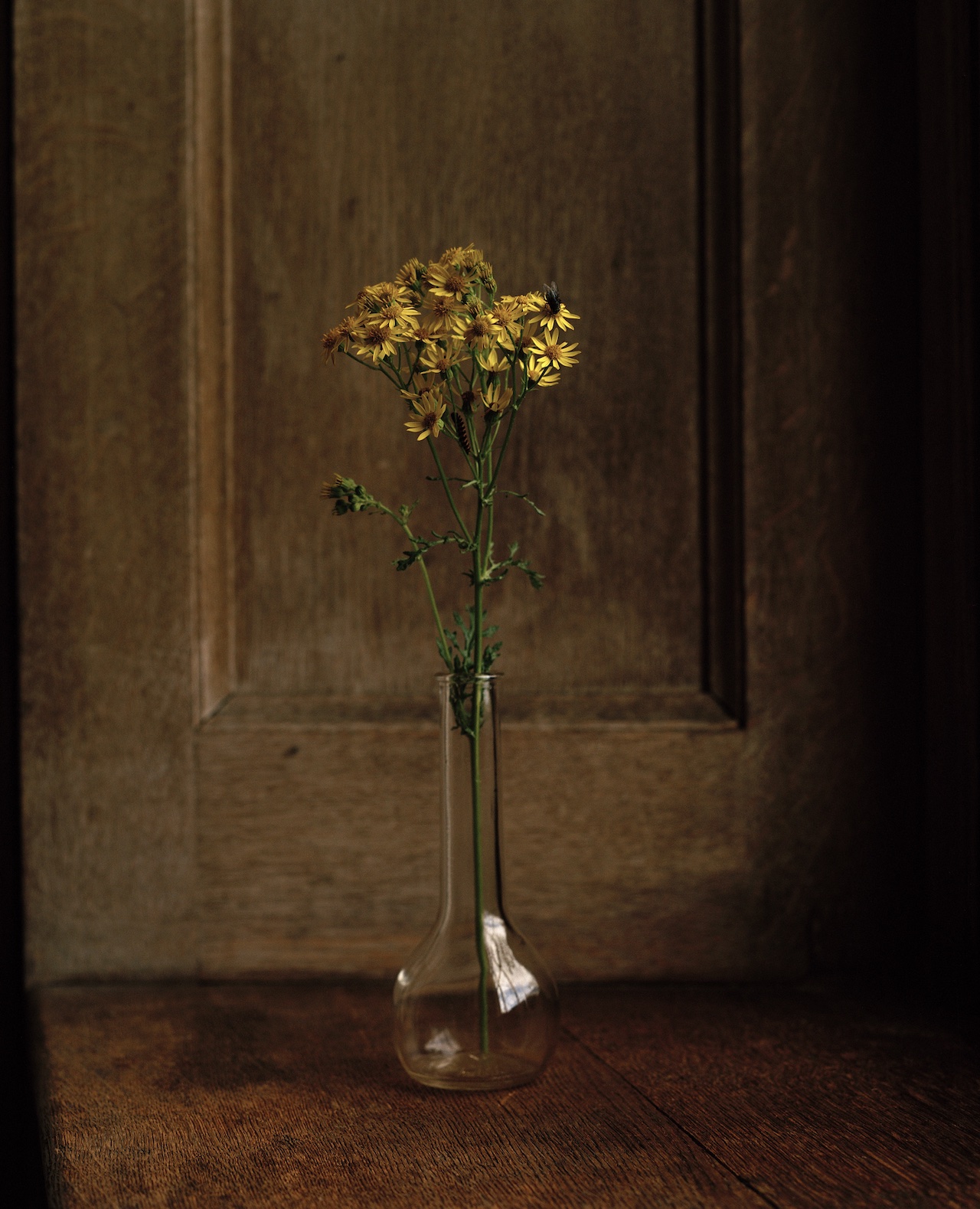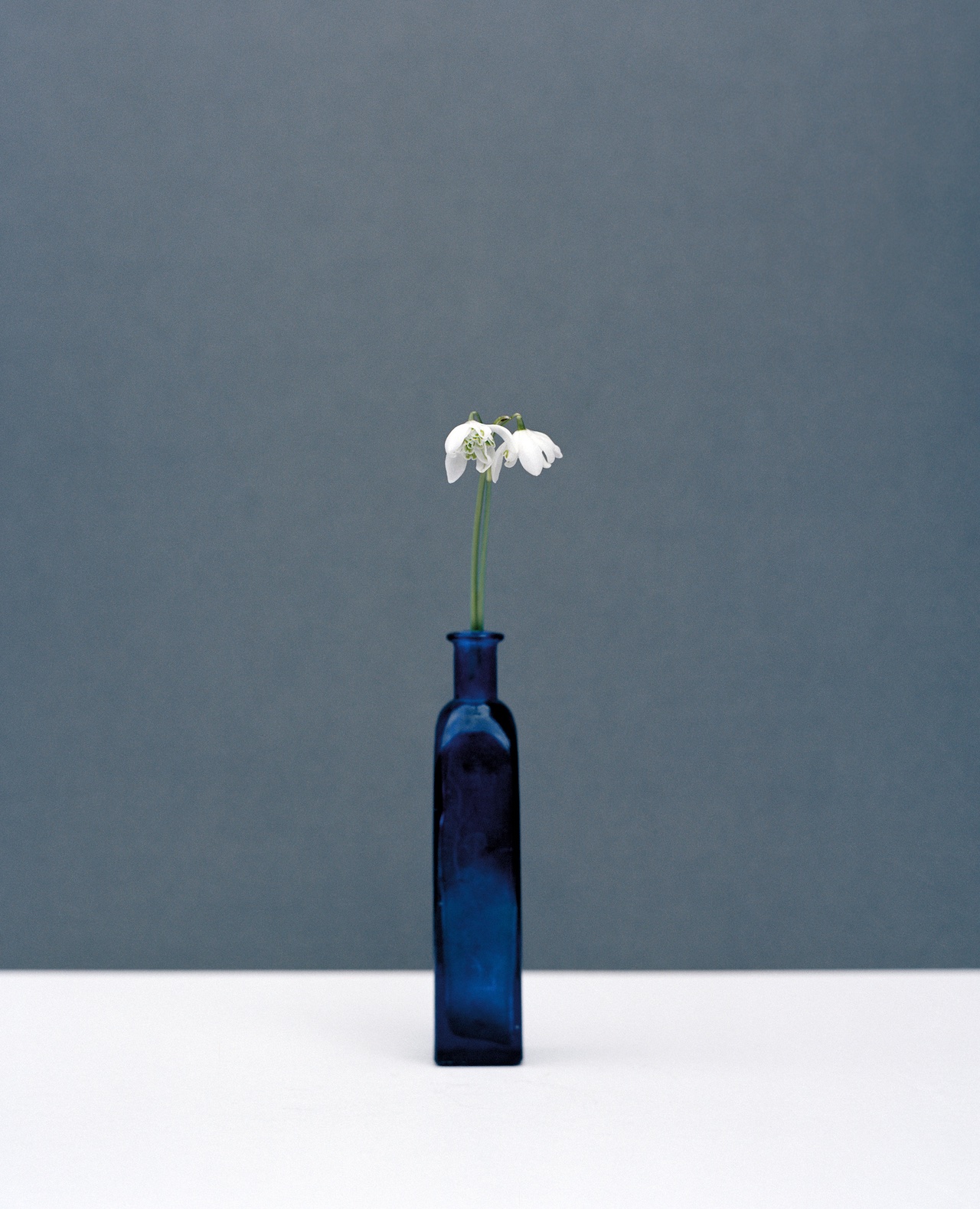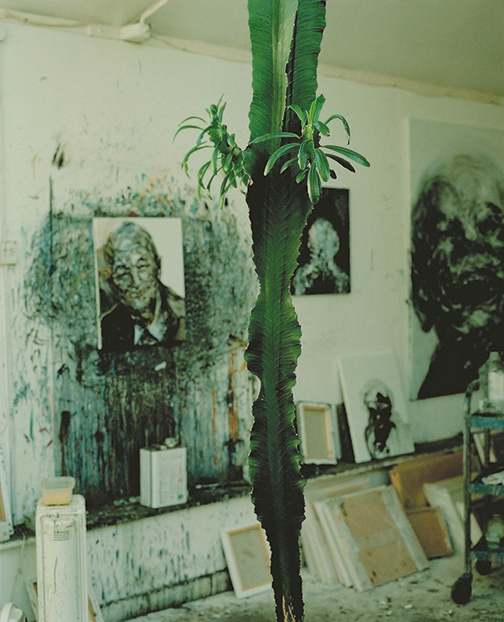Kate Friend invites creatives and public figures to pick a single flower or plant for her to photograph. Here, she reveals the process behind five of her portraits
The history of still life is as varied as it is long; as steeped in allegory, philosophy, and botanical science as it is entrenched in the formalist fundamentals of image-making. For photographer Kate Friend, the thrill of the genre is found among the most “extreme photographic experimentations”. She cites the influence of Anna Atkins’ pioneering cyanotypes, Karl Blossfeldt’s wooden camera with one-metre-long bellows, and Ogawa Kazumasa’s advances with coloured collotypes. The question of “what a photograph can be and how it’s made” is Friend’s creative preoccupation. It is the central tenet to her ongoing series, As Chosen By – a series of “botanical portraits” made between 2019 and 2022.
Friend’s own relationship with botany is one of “enthusiasm”. Finding herself on a mission to find “the most vibrant, most alive plant specimens… to see where they were growing and how they had been willed into existence”. It was this pursuit that led her into the homes and studios of willing participants for the project – a role-call of creatives and public figures including chef Jeremy Lee, fashion designer Molly Goddard, and garden designer Charlie McCormick. Each were people the artist felt might “understand” the work, Friend says, and it is a constantly evolving list.
Through a process the artist insists is “communal… not collaborative”, each portrait narrows-in on the idiosyncratic choice of her so-called ‘sitters’: individuals recast through the alter-ego of their botanical specimen. Each is “as much a portrait of a place as it is a portrait of a person and a flower”, Friend muses.
From Juergen Teller’s strawberry, to Dan Pearson’s dierama pulcherrimum, the results are pure unabashed colour-fields, remarkably consistent in form despite the myriad challenges of their unpredictable set-ups. “A lot of releasing expectations” was involved, Friend recounts – from tricky subjects, to haphazard locations and temperamental weather. But as time went on, the value of this free-form process began to emerge, says Friend: “I’ve found giving up some control to be essential in producing something that feels spontaneous.”
The series is currently on display at Thyme, a hotel in the Cotswolds (the work’s first showing outside of London). Viewers will be permitted to move directly from the meadow into the gallery – associating the work more overtly to ideas of “biophilia, seasonality, cycles, ecology, climate”, Friend hints. Whether colour or climate, they are images to linger with, to be seduced by. They are timeless in their craft and yet as alive in concept as they were originally conceived to be, inviting dialogue with each of our own inner botanical spirits, and with the ancient tradition of artists taking time to frame nature’s ephemeral beauty.
Below, we uncover the process behind a selection of five botanical portraits.
Margaret Howell, fashion designer: Hydrangea
Margaret Howell was clear her hydrangea flower needed to be dried, not fresh – fading from pink to a specific shade of pale green. Engraved antique glass was chosen for the vessel, photographed in Howell’s house in Suffolk, next to a large glass sliding door. Howell was the first “sitter” that Friend worked with: “Her trust comes through in the portrait,” she says.
Luciano Giubbilei, garden designer: Asphodelus Fistulus
Storm warnings, high seas and strong winds greeted Friend in Mallorca on her mission to find the Asphodelus Fistulus. The prolific plant blooms in February, when there is little else to speak of. The flower is pictured with a kiln roller in the ceramics studio at Luciano Giubbilei’s home, which was formerly owned by a ceramicist. This was one of the first portraits Friend made outside of the UK. The artist battled “very challenging” conditions: “I was expecting some golden Mediterranean light and got something much more like the UK I’d just left,” she says. “I felt like the island was trying to tell me something”.
Isabella Tree, author and travel journalist : Ragwort
Traditionally maligned for poisoning horses and cattle, ragwort is is a common wildflower that Isabella Tree espouses in her book, Wilding, for its vital role as a pollinator. Great swathes of yellow ragwort were cut by Isabella and placed in a huge vase, from which Friend extracted a couple of stems for the portrait. “It felt like they’d been selected to symbolically champion Isabella’s cause,” Friend marvels.
Penny Rimbaud, writer, philosopher, painter, musician and activist: Snowdrop
Not inclined to pre-determine his choice of flower, Penny Rimbaud invited Friend to stomp through the bare, muddy January garden of his “anarchist-pacifist home” in Essex in the hope of finding a suitable subject matter. Miraculously, “from a swampy patch of grass” burst forth a clump of snowdrops. For the 78 year-old artist-activist, it was a sign of beauty in vulnerability and “a noble effort” on the part of nature. “I felt like the choice had been made,” says Friend.
Maggi Hambling, artist: Cactus
Maggi Hambling responded to Friend’s invitation with a photograph of her cactus, Esmeralda: a 30 foot high “vast leggy” specimen that resides in the vaulted ceiling of Maggi’s studio. There was no way the cactus would fit within Friend’s frame. So instead, she chose to photograph the studio as a whole. Maggi was present throughout, “smoking, painting and drinking coffee,” as Friend recalls. “Maggi calls the cactus ‘her greatest friend in the studio’. This was something I wanted to reflect in the portrait”, Friend explains.
Kate Friend: As Chosen by is on show at The Tithe Barn, Thyme, Gloucestershire until 18 September 2022.

